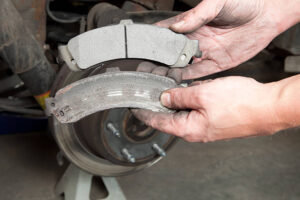
Choosing the right tires for your vehicle isn’t just about finding the perfect fit; it’s also about striking a balance between quality and affordability. Your car’s tires are the only point of contact with the road, affecting its handling, safety, and overall performance. However, navigating the vast array of options while staying within budget can be daunting. This comprehensive guide will assist you in making an informed decision, ensuring you find quality tires that match your financial constraints. If you’re in Auckland, consider exploring “Your Source for Affordable Used Tires in Auckland” as your source for budget-friendly options.
Understanding Your Needs
1. Assess Your Driving Habits:
Before delving into tire selection, evaluate your driving patterns. Are you mostly commuting on highways or traversing rough terrains? Different driving conditions demand specific tire features.
2. Climate Consideration:
Weather profoundly impacts tire performance. If you experience extreme cold, heat, rain, or snow, opt for tires designed to handle those conditions.
3. Vehicle Specifications:
Refer to your vehicle manual for recommended tire sizes and types. Straying from these recommendations can affect safety and performance.
Types of Tires
1. All-Season Tires:
Versatile and suitable for various conditions, all-season tires provide moderate performance in different weather conditions. They’re a common choice for everyday driving.
2. Summer Tires:
Designed for hot climates, these tires offer superior grip and handling on dry roads. They might not perform well in cold or wet conditions.
3. Winter Tires:
Ideal for cold climates and snowy conditions, winter tires provide excellent traction on ice and snow, ensuring better safety during winter months.
4. Performance Tires:
Engineered for enhanced speed and handling, performance tires offer better grip and responsiveness. They are ideal for sports cars but might sacrifice longevity.
Budget Considerations
1. Price Range:
Determine your budget range. Remember, investing in higher-quality tires might save money in the long run due to better durability and performance.
2. Cost vs. Value:
Assess the balance between cost and value. Sometimes, slightly pricier tires offer better durability, performance, and safety features, making them a better long-term investment.
Quality Indicators
1. Tire Ratings:
Look for tires with good ratings in traction, temperature resistance, and treadwear. The Uniform Tire Quality Grading (UTQG) system provides insight into a tire’s treadwear, traction, and temperature resistance.
2. Brands and Reviews:
Renowned brands often invest in research and development, resulting in higher-quality tires. Checking customer reviews and expert opinions can offer valuable insights.
Maximizing Your Budget
1. Sales and Rebates:
Keep an eye on promotions, sales, and manufacturer rebates. Many tire retailers offer discounts periodically.
2. Consider Alternative Brands:
Lesser-known brands might offer competitive quality at a lower price point. Research thoroughly and read reviews before considering these options.
3. Buy in Sets:
Purchasing a full set of tires can sometimes lead to cost savings. Additionally, it ensures uniformity in performance and wear across all wheels.
Maintenance and Longevity
1. Proper Inflation and Rotation:
Regularly checking tire pressure and rotating tires can significantly extend their lifespan and maintain optimal performance.
2. Alignment and Balancing:
Ensuring proper wheel alignment and balancing prevents uneven wear, enhancing the durability of your tires.
Final Considerations
1. Warranty and Guarantees:
Evaluate warranties and guarantees provided by manufacturers or retailers. They often reflect confidence in the product’s quality.
2. Professional Advice:
Consulting a trusted mechanic or tire specialist can offer personalized recommendations based on your vehicle, driving habits, and budget.
Conclusion
Selecting the right tires involves a blend of understanding your driving needs, budget constraints, and the quality of available options. By assessing these factors in unison, you can strike a balance that ensures your safety, vehicle performance, and budgetary requirements are all met. Remember, tires are a crucial investment in your vehicle’s overall well-being, and making an informed decision will benefit you in the long run.

















